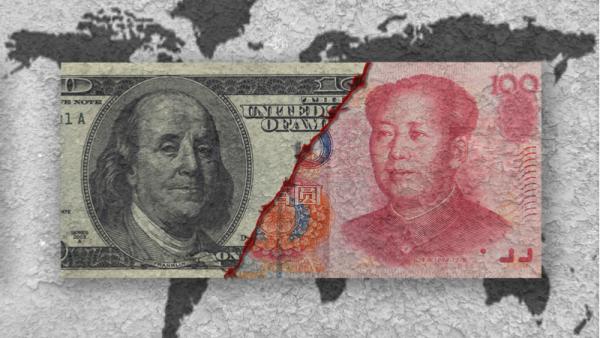Donald Trump's trade war against China a case of sour grapes

James Laurenceson, Deputy Director, Australia-China Relations Institute, University of Technology Sydney |
This article appeared in The Australian Financial Review on March 23 2018.
President Trump is finally doing exactly what he said he would do back on the campaign trail in 2016: target China over what he claims are unfair trade practices, particularly around the theft of intellectual property (IP).
The US plan, subject to a 30-day feedback period, proposes slapping tariffs of up to 25 per cent on more than one thousand Chinese imported goods, worth around US$S60 billion. The US Treasury has also been instructed to come up with a list of investment restrictions aimed at Chinese companies and funds.
The Chinese ambassador to the US immediately responded that 'if people want to play tough, we will play tough with them and see who will last longer'.
Independent modelling warns a tit-for-tat trade war could cost Australia dearly.
US Trade Representative, Robert Lighthizer, also told trading partners this week that they'll stand a better chance of being granted an exemption from Trump's previously announced steel tariffs if they sign up to the attack on China.
This makes American complaints about China's proclivity to engage in economic coercion look rather ironic.
Historical US frustration with China over IP is understandable. But the timing of the latest moves raises doubts about their motivation.
Just last month the US Chamber of Commerce released a report on the state of IP protection around the world.
It found that while the 'challenges rights holders face in China are enormous', 'unlike many of its peers, China is making concrete progress in building a 21st century national IP environment'.
In fact, comparing the data in the 2018 report with previous years, the US Chamber concluded that 'only China has shown real – albeit incremental – signs of positive reform efforts'.
It now judges IP protection in China to rank in the middle of the pack internationally and cites the example of a Beijing IP court siding with Apple Inc last year as evidence that 'Chinese courts don't necessarily rule in favour of domestic companies'.
Recent academic studies that draw on much bigger samples come to the same conclusion.
China's progress is explained by World Intellectual Property Organisation data that show it is now the world's leading applicant for patents, trademarks and industrial designs.
In 2016 China's patent office received 43 percent of applications globally, albeit the quality of many of these is questionable.
A report in February by the US National Science Foundation found that China now produces more scientific articles than the US.
In part, might it be that what the US is reacting to is competitive pressure, rather than trade that is rigged against it?
To the extent that China does still steal IP or forces foreign firms to transfer their technology, such practices are covered by World Trade Organisation (WTO) rules.
Indeed, when China became a WTO member in 2001 it was forced to accept what legal scholars described as 'WTO-plus' obligations.
The Australian government's trade and investment promotion body, Austrade tells companies here that the WTO provides a 'powerful mechanism to keep China accountable' on IP issues.
Yet rather than pursue China for IP violations through the WTO as it did in 2008, the US is now sidestepping the international body and taking unilateral steps enabled by domestic legislation.
The strength of the WTO is that it upholds a rules-based trade order that weaker countries like Australia can use to take on the might of China or the US when they behave badly.
China is a popular target for other WTO members, currently a respondent in 39 cases. But the US is being hauled in on 136.
An academic analysis of WTO dispute decisions last year also found that the US was by far the biggest 'sinner' in not complying with WTO rulings, accounting for more than two-thirds of such cases.
And for more than a year the US has been blocking the appointment of new judges to the WTO's dispute body, leading to the publication of evidence-based findings being slowly ground to a halt.
The calibre of rhetoric rolling off tongues in Washington that accuses China of enriching itself through trade policies that are 'mercantalist' is also worrying.
This implies that China is gaining an advantage by subsidising domestic production to boost exports while simultaneously restricting imports.
Never mind that economists have known for more than two centuries that 'mercantalism' cuts growth, not promotes it.
There's also the reality that last year China's current account surplus with the rest of the world was only 1.2 percent of GDP. It hasn't been higher than 2.7 percent all this decade. Meanwhile, US allies Germany, Korea and Japan have surpluses of 7.7 percent, 5.4 percent and 3.8 percent, respectively.
Last week Trump's new Chief Economic Advisor, Larry Kudlow called for the formation of a 'trade coalition of the willing' of 'large trading partners and allies against China'.
This week marked the 15th anniversary of Australia joining the original US-led 'coalition of the willing', the disastrous invasion of Iraq that had little regard for evidence or international law.
In settling on its own response to the latest US moves, regard for evidence and international law are considerations that Australia must now weigh carefully once again.
Author
James Laurenceson is Deputy Director of the Australia-China Relations Institute at the University of Technology Sydney.

